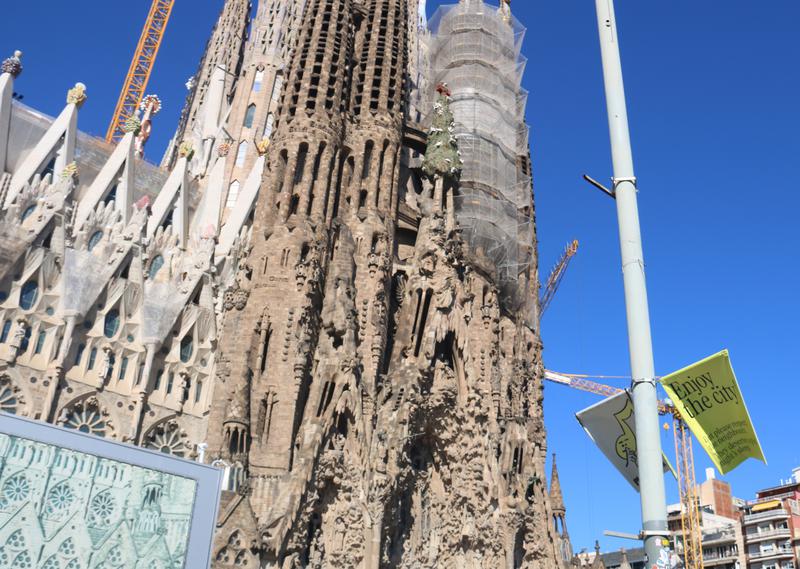Barcelona targets tourism management in 16 frequently oversaturated city spots
€44 million investment over four years to improve vigilance, cleaning, neighborhood dynamism and more

The Barcelona City Council has outlined a new plan for tourism management in the city, coming into operation this summer.
The city will target 16 locations which are frequently oversaturated with visitors, and will see an investment of €44 million over the next four years.
That money will go towards 33 measures aimed at strengthening vigilance, cleaning, neighborhood coexistence, and others to mitigate the inconvenience of overtourism for locals.
Three spots will be prioritized: Sagrada Família, Park Güell and the Boqueria market on La Rambla.
The council even intends to limit the flow of tourists at times so their experience is not disappointing.
The other tourist areas included in the plan are Passeig de Gràcia-Plaça Catalunya, the Gòtic neighborhood, La Rambla, Born, Barceloneta, Rambla del Poblenou, Front Litoral, Parc del Fòrum, Les Glòries, Turó de la Rovira, Sant Antoni market, Montjuïc-Poble Sec, and Camp Nou.
The management plan will take into account the particularities of each area while minimizing the negative effects that tourist activity can have on locals at certain times. At the same time, the council hopes it will guarantee that tourism "continues to bring wealth and dynamism" to the city.
A Technical Coordination Office will be created to oversee the measures across the city. Additionally, the plan envisages the creation of a data office to analyze the impacts in the areas studied.
The number of civic agents in Barcelona will be increased to 70 during the summer campaign compared to 58 for the rest of the year, a program to support local trade in the 16 locations will be established, tourist bus routes will be rearranged at times, and cleaning and security operations will be reinforced.
One of the objectives is to boost trade aimed at residents and to offer more community, neighborhood, cultural, and family activities in spaces traditionally occupied by tourism. This is why traditional trade will be promoted among tourists and more inspections will be carried out at shops aimed at tourists.
The deputy mayor for economic promotion, Jordi Valls, explained in a press conference on Wednesday that the recovery of tourism in European cities after the pandemic has been faster than expected.
The Catalan capital is expected to break tourism records this year, something that neither generates "joy" nor "sorrow" for Valls.
Instead, the councilor believes the new plan will allow authorities to fine-tune municipal administrative measures and focus resources to have a real impact on oversaturated areas, or to at least reduce the inconveniences for locals.
Valls admitted that the city is "reaching the limit" in terms of the number of tourists, but he has admitted it is very difficult to prohibit the arrival of visitors. For this reason, authorities want to regulate the city's offering and, instead of "enhancing" the Barcelona brand, he wants to "defend" it.
"Tourism adds value, but after a certain limit, it no longer does," he added, explaining that he wants above all to manage public space because this is what can help build a city for all.